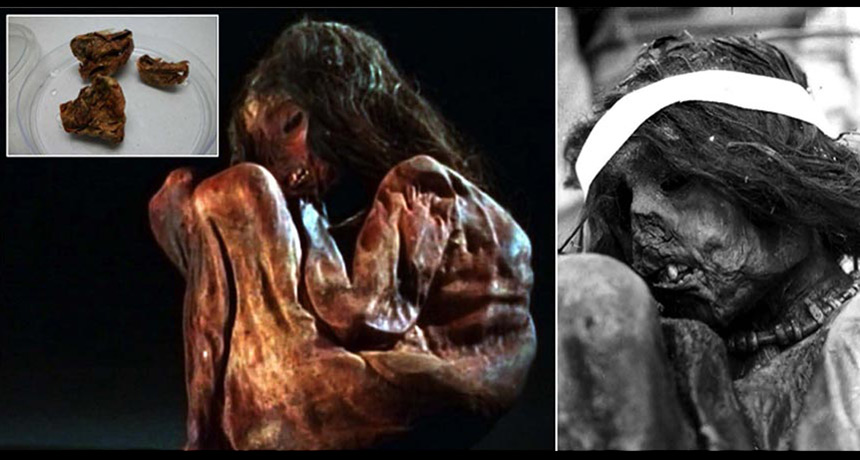Mummified boy’s DNA unveils new but ancient maternal lineage

MUMMY’S MOMMIES A mitochondrial genome extracted from the lung (inset) of this mummified Incan boy indicates that he belonged to a previously unknown line of maternal ancestors that arose in South America approximately 14,300 years ago.
Gόmez-Carballa et al./ Scientific Reports 2015







